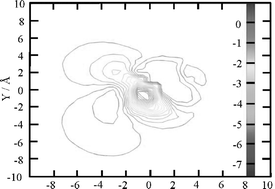High level ab initio calculations were employed to study the chiral recognition effect in several chiral molecular pairs that consist of the propylene imine and hydrogen peroxide molecules. The potential energy surfaces for the complexes formed between S-cis-1,2-propylene imine and the two enantiomeric forms of hydrogen peroxide were constructed, using the calculated interaction energies at different separations and orientations. The energy calculations were done using the MOLPRO suite of programs with CCSD(T)/cc-pVDZ. The energies were counterpoise corrected at every point to eliminate the basis set superposition error. Complete geometry optimizations were further carried out for the molecular complexes consisting of the cis- or trans-propylene imine isomers and the two enantiomeric forms of hydrogen peroxide. The geometry optimizations were done using the Gaussian 98 and 03 suites of programs, with MP2/aug-cc-pVDZ being the highest level used. Altogether, eight stable complexes were identified, and the corresponding dissociation energies were calculated with MP2/aug-cc-pVTZ. The largest chirodiastaltic energy is found at 0.74 kcal mol−1 for the (syn)
trans-propylene imine·hydrogen peroxide complexes, where hydrogen peroxide acts as a hydrogen donor and is on the opposite side of the ring from the methyl group. The rotational constants, dipole moments, and harmonic frequencies of the complexes are presented to assist future spectroscopic investigations.

You have access to this article
 Please wait while we load your content...
Something went wrong. Try again?
Please wait while we load your content...
Something went wrong. Try again?


 Please wait while we load your content...
Please wait while we load your content...